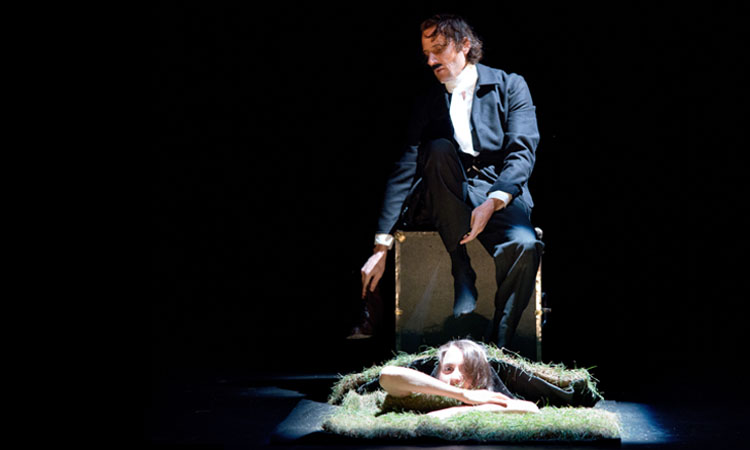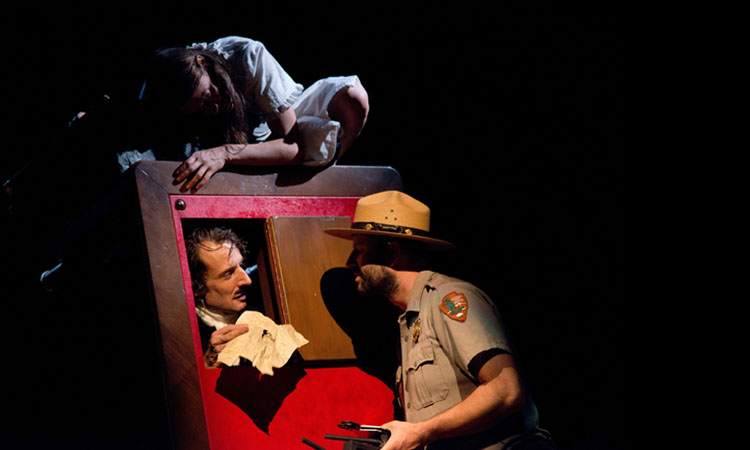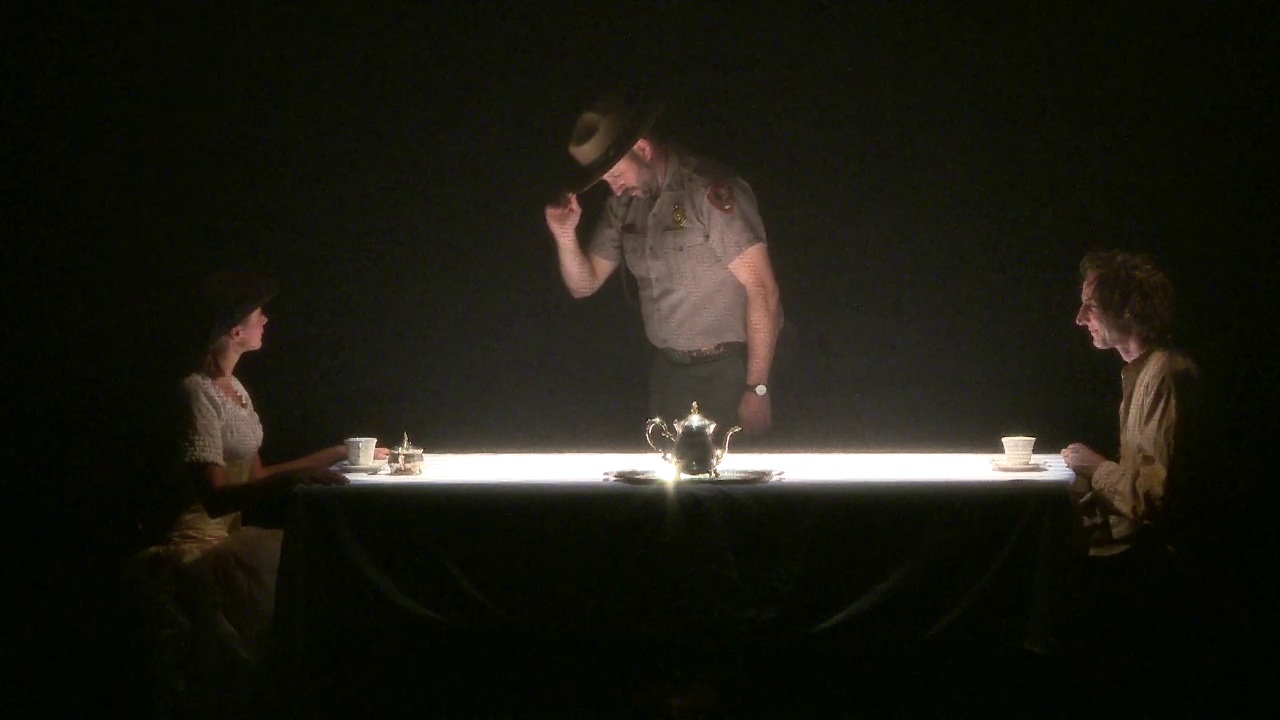At times funny, at times heartbreaking, and from quirky start to haunting finish a feast of entrancing visual allurements, this exquisite show is among the most original musical theater works I’ve seen in years. Read the full review
Lucidity Suitcase Intercontinental and Wilhelm Bros. & Co.’s production is one of the rare experiences in which you feel separated from your body as the fluid, dreamlike tableaux of RED-EYE take residence in your mind and firmly stay put. For a dance-heavy piece about a dying author, RED-EYE is as fleet as a Wes Anderson comedy… this surreal and haunting play forces us to question the human experience in the modern age. ‘Has all this speed made us more happy – or more wise – than we were 6,000 years ago?’ Poe asks. We’re still figuring out the answer to that one, but the soulful, bravura RED-EYE to Havre de Grace will make you both happier and wiser.
Four performers bring a breathtaking array of talent to create the sometimes funny, sometimes tragic, always captivating world of Poe, the poet, critic, and essayist, whose mind unravels as he tries to make his way back to New York after a speaking engagement in Philadelphia.Read the full review
Check out the show’s official site for more details.
Collaborators: Thaddeus Phillips, Jeremy Wilhelm, Geoff Sobelle, David Wilhelm, Sophie Bortolussi | Directed and Stage Design by Thaddeus Phillips | Music by Wilhelm Bros & Co. | Produced by Lucidity Suitcase Intercontinental | Lighting Design by Drew Billiau
On September 27, 1849, Edgar Allan Poe set out on a lecture tour from Virginia to New York. Days later a train conductor saw Poe in Havre de Grace, Maryland, wearing a stranger’s clothing and heading south to Baltimore where he died on October 7. The Wilhelm Bros & Co. teams up with innovative stage director Thaddeus Phillips of Lucidty Suitcase Intercontinental to create an action-opera that follows the odd details surrounding Poe’s mysterious last days.
Informed by 19th century train routes, historical accounts, and Poe’s letters to his mother-in-law Muddy, RED-EYE to HAVRE de GRACE comments on the nature of being an artist in America and casts Poe in a new light by exploring his writings on the gold rush, fools, furniture, and the universe. Read more. . .
Collaborators: Thaddeus Phillips, Jeremy Wilhelm, Geoff Sobelle, David Wilhelm, Sophie Bortolussi | Directed and Stage Design by Thaddeus Phillips | Music by Wilhelm Bros & Co. | Produced by Lucidity Suitcase Intercontinental | Lighting Design by Drew Billiau
On September 27, 1849, Edgar Allan Poe set out on a lecture tour from Virginia to New York. Days later a train conductor saw Poe in Havre de Grace, Maryland, wearing a stranger’s clothing and heading south to Baltimore where he died on October 7. The Wilhelm Bros & Co. teams up with innovative stage director Thaddeus Phillips of Lucidty Suitcase Intercontinental to create an action-opera that follows the odd details surrounding Poe’s mysterious last days.
Informed by 19th century train routes, historical accounts, and Poe’s letters to his mother-in-law Muddy, RED-EYE to HAVRE de GRACE comments on the nature of being an artist in America and casts Poe in a new light by exploring his writings on the gold rush, fools, furniture, and the universe. Read more. . .



